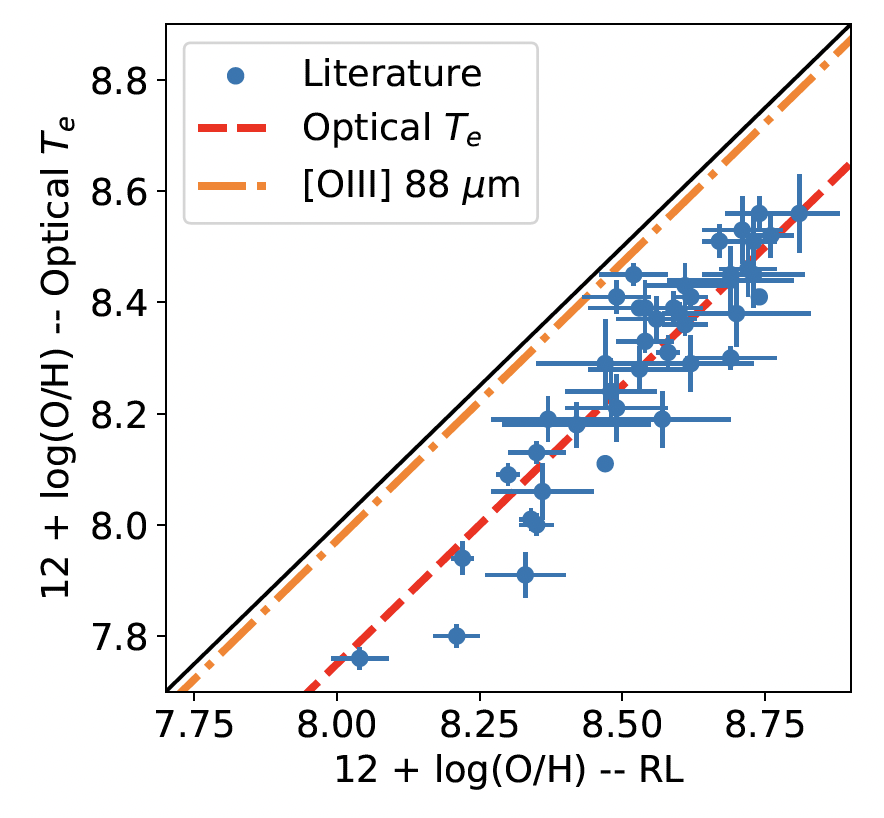The CIRAAS Survey
Comprehensive IFU Research on Accurate Abundance Studies
Gas-phase metallicity is the amount of heavy elements (e.g., O/H, N/H) in a galaxy’s interstellar gas. Stars make these elements through nuclear fusion and release them through stellar and supernova wind. Metallicity and the relative ratios between different metals are sensitive to the galaxy formation history: how many stars it has formed and how much fresh gas it has gained or lost. It also affects how new stars and planets form since metals help gas cool and turn into new celestial bodies.
However, measuring the gas-phase metallicity is not straightforward. Different observational methods may not agree with each other.

The CIRAAS (Comprehensive IFU Research on Accurate Abundance Studies) Survey is designed to map the metal emission lines in the optical and infrared wavelengths, by using the integral field units (IFU) on the Keck, Herschel, and SOFIA observatories. The primary goal is to investigate the cause of the inconsistency and unify the metallicity measurement methods.
Some early results are presented in (Chen et al., 2023) and (Chen et al., 2024). The CIRAAS survey will extend the methodology to ~25 star-forming regions/galaxies in the nearby universe and provide crucial local references to galaxies across the Universe.
Investigating Star Formation and Metallicity in the Early Universe
Our research focuses on uncovering the physical conditions of high-redshift galaxies, particularly during their formative stages. By leveraging state-of-the-art instruments like the JWST NIRSpec and Keck/MOSFIRE, we analyze key spectral features such as oxygen and nitrogen emission lines to assess metallicities and ionization conditions. Studies have revealed young, bursty star-forming phases, low metallicities, and insights into the rapid assembly of stellar populations in galaxies at redshifts as high as z∼9. This work provides a crucial foundation for understanding the interplay between star formation and chemical enrichment in the universe’s earliest galaxies.
Lyα Emission and Photon Escape as Diagnostics
Lyα emission is a powerful tool for investigating ionizing photon escape and star formation activity in early galaxies. Using a combination of spectroscopic and photometric data, we explore how Lyα profiles, equivalent widths, and other features correlate with ionizing escape fractions and other galaxy properties. These efforts aim to refine models of reionization and improve the accuracy of metallicity diagnostics across cosmic time.
Every project has a beautiful feature showcase page. It’s easy to include images in a flexible 3-column grid format. Make your photos 1/3, 2/3, or full width.
To give your project a background in the portfolio page, just add the img tag to the front matter like so: